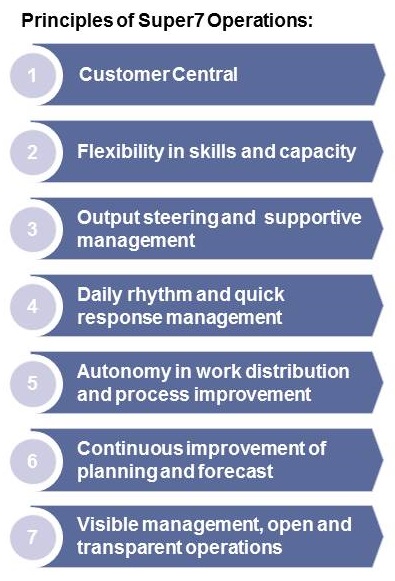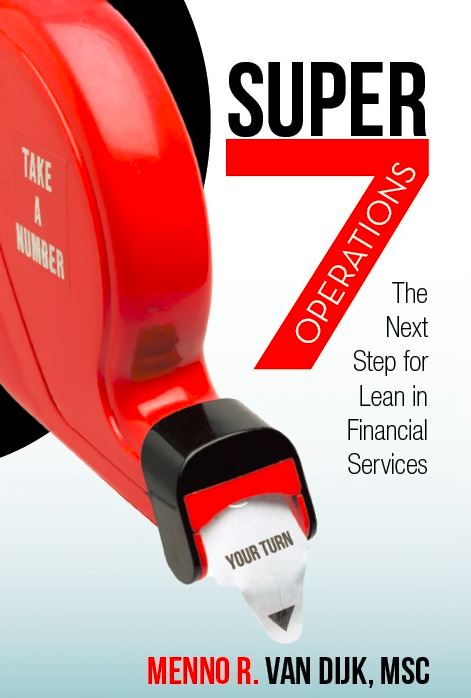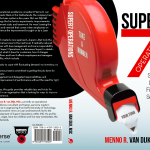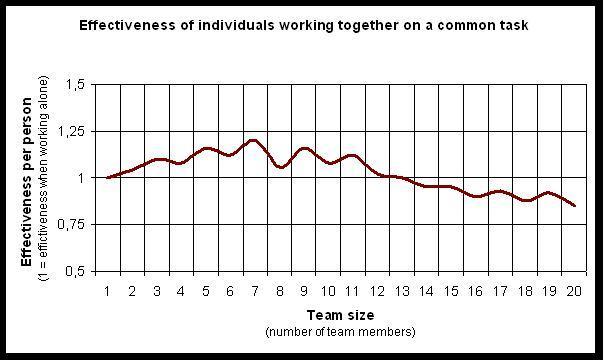Successful implementation of Super 7 Operations – the next step for lean in financial services – depends on the introduction of all 7 principles of Super7 Operations: 1. Customer central, 2. Felxibility in skills and capacity, 3. Output steering and supportive management, 4. Daily rhythm and quick response management, 5. Autonomy in work distribution and process improvement, 6. Continous improvement of planning and forecast, 7. Visual management – open and transparent operations.

Principles of Super7 Operations
Naturally, the introduction of the principles of Super 7 Operations is best done step-wise. However, it’s good to start with the end in mind: what does good look like in Super 7 Operations?
- The Super7 team has a goal that is relevant for the customer. The Super 7 team can help each other in achieving this goal. The goal is translated daily to a goal for that day. The Super7 team is committed to achieving the daily goal. When problems arise during the day and the daily goal can’t be met, the Super 7 team responses by doing what they can to come as close as possible to the goal. When that isn’t enough to reach the goal, they ask for help from their team manager. The request for help is quantitative and specific. For instance: we come 6 hours short, we solve 4 hours ourselves and ask for 2 hours help from another team.
- All Super 7 team members have the skills for all types of work. The Super7 Skills-Matrix shows who can do what, and at what skill level. The Super 7 team members are sufficiently flexible in working hours to be able to meet customer demand on busy days.
- Team manager steers on output. Manager stimulates the Super 7 team to come up with solutions. Manager is available and helpful when the Super7 asks for help.
- The daily rhythm is adjusted to the rhythm of the customer requests. There is a fixed schedule for Super 7 team stand-up meetings, focused on achieving the daily goal. When incidents happen, the department responses quickly in constructive and effective dialogue between Super7 team and their manager, and subsequently between the team managers and the department head.
- Super 7 team is autonomous in work distribution and who does what. There is a standard way of working. The team can deviate from this standard, as part of an improvement experiment. The duration of this experiment is known beforehand (optimally 1 week). Evaluation is based on facts and figures. Most important outcome, however, is what the Super7 team has learned from the experiment.
- The Super 7 team is stimulated to continuously make the daily goals more challenging. Standard norm times are improved and planning is made tighter. Work is planned based on forecast. The organization continuously strives towards improved forecast accuracy and improved performance. Performance is discussed on all level of the organization.
- The Super 7 team board is neat and easy to read. Daily goal and progress towards this is visible on the Super7 team board. Performance of last period is visible, as is the trend. Running and planned experiments and improvements are visible on the Super7 team board. Fixed lines are made with tape, fixed headers are printed.
More on Super7 principles? My book on Super7 Operation – the Next Step for Lean in Financial Services – is available in bookstores!







